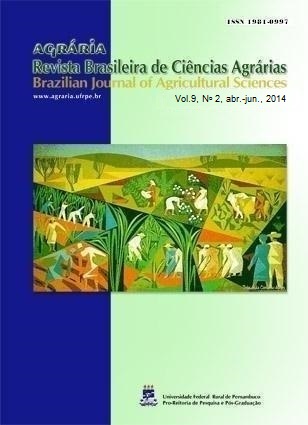Evaluation of the crude protein requirement for pacamã Lophiosilurus alexandri Steindachner, 1876 fingerlings
DOI:
https://doi.org/10.5039/agraria.v9i2a3092Keywords:
catfish, growth, nutrition, native fishAbstract
Pacamã (Lophiosilurus alexandri) is a carnivorous fish belonging to the order Siluriformes which has great potential in aquaculture. This study aimed to evaluate the crude protein (CP) requirement for pacamã fingerlings. The experiment was conducted in a completely randomized design with five treatments and four replications. Treatments consisted of increasing levels (35, 38, 41, 44 and 47%) of CP. The fingerlings (2.32 ± 0.02 g, n = 100) were divided into 20 plastic boxes with a volume of 36 L, totaling five fish per box. After 45 days, the parameters final weight (FW), weight gain percentage (WGP), specific growth rate (SGR), survival (SV), total length (TL), standard length (SL), width (WID), height (HGT), head length (HL) and carcass yield with (CYH) and without head (CYW) were evaluated. There was a significant effect of treatments on FW, WGP, SGR, TL, SL, WID and HL, with the best results being obtained with the lowest levels of protein tested. The remaining parameters were not affected by treatments (P>0.05). The diet with 38% of crude protein was found to be the best productive performance for pacamã fingerlings.
Downloads
Downloads
Published
How to Cite
Issue
Section
License

This work is licensed under a Creative Commons Attribution-NonCommercial 3.0 Unported License.


